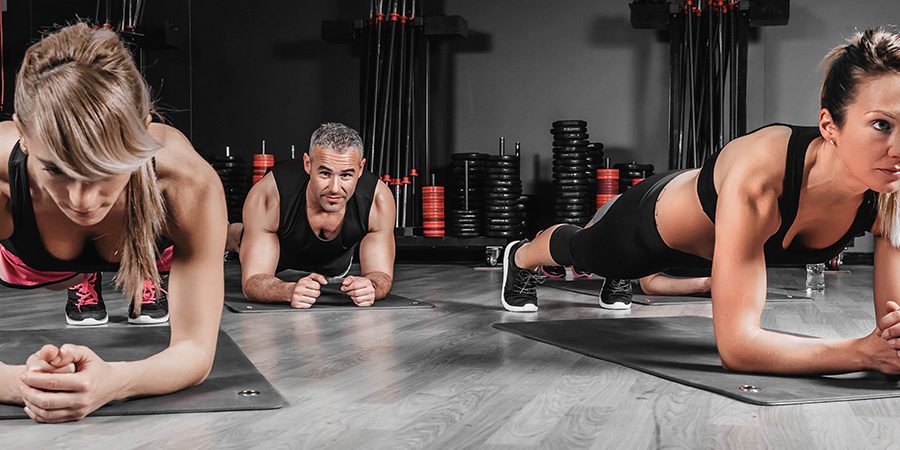High-Intensity Interval Training (HIIT) has been a buzzword in the fitness industry for some time, and recent research continues to support its efficacy, especially in the realm of cardiorespiratory health. This article delves into the latest studies that explore the impact of HIIT on cardiorespiratory fitness, providing insights for fitness professionals interested in implementing this training modality with small groups.
The Science Behind HIIT
HIIT involves short bursts of intense exercise followed by periods of rest or low-intensity exercise. This training method has been shown to improve aerobic capacity, endurance, and metabolic health. But what does the latest research say about HIIT and cardiorespiratory health?

Tabata HIIT and Nanocurcumin Supplementation
A study by Noorbakhsh and Roshan (2023) investigated the effects of 8 weeks of Tabata HIIT and nanocurcumin supplementation on inflammation and cardiorespiratory health among elderly overweight women. The study found significant improvements in body composition and cardiorespiratory hemodynamics in the Tabata HIIT groups compared to control groups. Interestingly, while Tabata training alone did not significantly affect the resting levels of myocardial infarction-associated transcript expression, the addition of nanocurcumin supplementation led to a reduction in NLRP3 inflammasome, suggesting a potential synergy between HIIT and nutritional supplementation for improving cardiorespiratory health.
Preoperative HIIT for Joint Replacement Candidates
Roxburgh et al. (2023) conducted a randomised controlled trial to compare the effect of low-impact interventions on cardiorespiratory fitness in individuals awaiting joint replacement surgery. The interventions included heat therapy, HIIT, and home-based exercise. The HIIT group, which performed intervals on a cross-trainer or arm ergometer, showed a 16% increase in peak oxygen consumption, significantly more than the other groups. This suggests that HIIT, even when performed with the upper limbs, can significantly improve cardiorespiratory fitness in preoperative patients.
HIIT vs. Crossover Point Exercise in Young Overweight Women
Yang, Zhang, and Zhu (2023) compared the effects of 10 weeks of HIIT and crossover point (COP) exercise on cardiovascular risk factors and vascular health in overweight young women. Both exercise modalities led to significant increases in maximal oxygen uptake and decreases in blood pressure and arterial stiffness. These findings highlight the potential of HIIT to enhance vascular health and reduce cardiovascular risk factors in young overweight females.
HIIT and Health-Related Fitness in Adolescents
Domaradzki, Kożenia, and Popowczak (2023) explored the prevalence of responders and non-responders to 10 weeks of school-based HIIT in adolescents. The study observed significant changes in body composition, resting blood pressure, and musculoskeletal fitness, with variations based on sex and biological maturation. This study underscores the importance of individualised approaches to HIIT, considering the varying responses among different populations.
Practical Applications
These studies collectively suggest that HIIT can be a powerful tool for improving cardiorespiratory health across various populations, from the elderly to adolescents. Fitness professionals can leverage these findings to design HIIT programmes that cater to small groups with diverse needs and health goals.
When implementing HIIT with clients, consider the following:
- Individualisation: Tailor HIIT sessions to the fitness level and health status of each participant.
- Nutritional Support: Explore the potential benefits of combining HIIT with nutritional supplements, as suggested by the synergistic effects observed in the Tabata HIIT study.
- Low-Impact Options: For clients with joint issues, consider upper-limb HIIT or other low-impact variations to improve cardiorespiratory fitness without exacerbating joint pain.
- Monitoring Progress: Use objective measures such as oxygen consumption and blood pressure to monitor improvements and adjust training intensity accordingly.
HIIT stands as a versatile and effective training method for enhancing cardiorespiratory health. By staying informed on the latest research and applying these insights, fitness professionals can deliver HIIT workouts that are both scientifically grounded and tailored to the needs of their clients.
References:
- Noorbakhsh, S., & Roshan, V. D. (2023). Influence of 8 Weeks of Tabata High-Intensity Interval Training and Nanocurcumin Supplementation on Inflammation and Cardiorespiratory Health among Overweight Elderly Women. Click here to review the full research article
- Roxburgh, B., Campbell, H., Cotter, J. D., Reymann, U., Williams, M. J. A., Gwynne-Jones, D., & Thomas, K. N. (2023). Upper-limb high-intensity interval training or passive heat therapy to optimise cardiorespiratory fitness prior to total hip or knee arthroplasty: a randomised controlled trial. Click here to review the full research article
- Yang, Y., Zhang, P., & Zhu, X. (2023). Effects of crossover point exercise and high-intensity interval training on vascular health in young overweight females. Click here to review the full research article
- Domaradzki, J., Kożenia, D., & Popowczak, M. (2023). The Prevalence of Responders and Non-Responders for Body Composition, Resting Blood Pressure, Musculoskeletal, and Cardiorespiratory Fitness after Ten Weeks of School-Based High-Intensity Interval Training in Adolescents. Click here to review the full research article
Unlock the Power of Intensity
Elevate your fitness coaching with our cutting-edge T3 HIIT Training Course, meticulously designed for fitness professionals who aspire to master the art of delivering dynamic 30-minute HIIT workouts. Whether you’re guiding one-on-one sessions, empowering small groups, or energising large classes, this course equips you with the strategies and skills to maximise workout efficiency and engagement. Grounded in the latest research proven to boost cardiorespiratory health, our T3 HIIT Training Course will not only transform your clients’ physical wellbeing but also expand your repertoire, setting you apart as a leader in high-intensity fitness. Join us to ignite a fitness revolution and witness your clients achieve remarkable health milestones, one interval at a time.
T3 High Intensity Interval Training (HIIT) Coaching – In-Person, Live-Virtual & Distance Study
